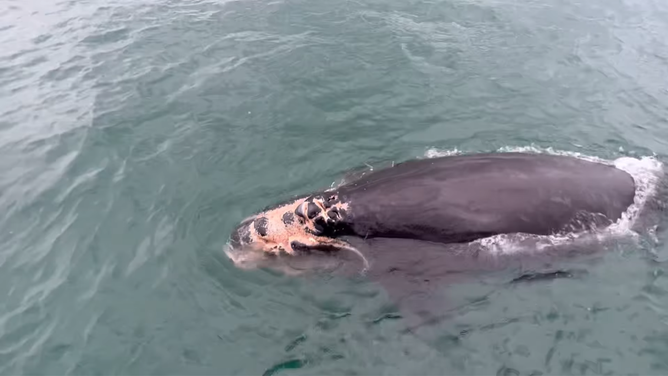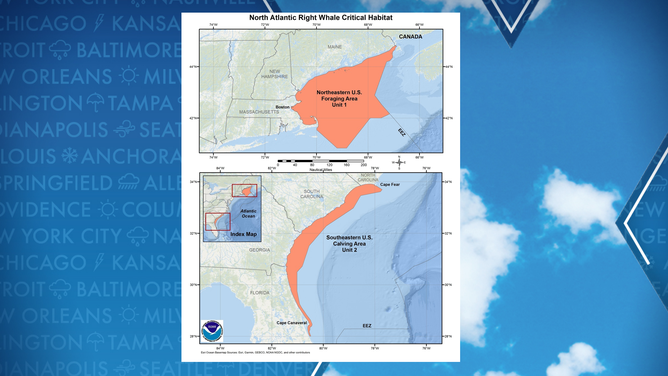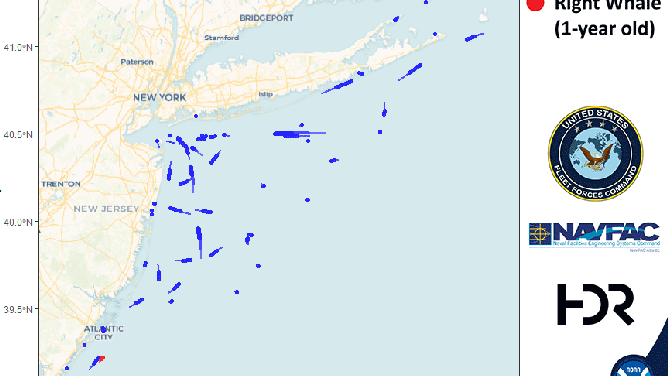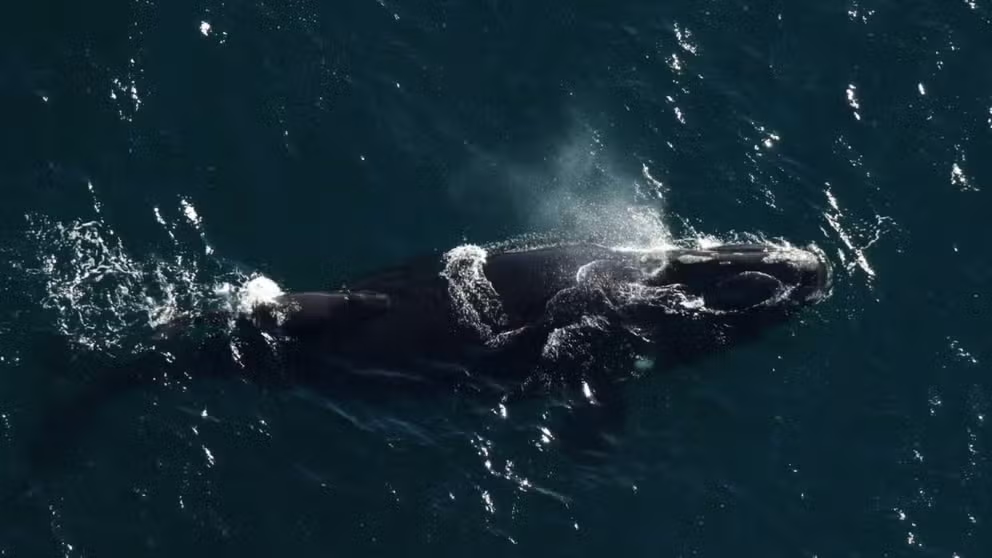Endangered right whale calf still alive despite severe injuries from boat strike
NOAA Fisheries reports there are only around 360 North Atlantic right whales left in existence. Since 2017, the species has been experiencing an Unusual Mortality Event, with the mammals dying faster than they can reproduce. Marine biologists estimate the species needs to produce 50 or more calves a year to stop the decline.
Right whale calves spotted off the Florida coast
NOAA Fisheries reports there are only around 360 North Atlantic right whales left in existence. Two new calves were recently spotted off the Florida coast.
An endangered North Atlantic right whale calf last spotted off the coast of the Carolinas continues to swim on despite experts’ opinions that it will likely die from complications from a boat strike while off the Southeast.
NOAA Fisheries recently said it had studied video and photos of the whale and determined that the vessel was 35–57 feet in length. Not much else is known about the encounter that left propeller wounds on the calf’s head, mouth and lip.
The agency has not received any reports of a strike and says the incident likely occurred between Dec. 9, 2023, and Jan. 3.

Injured North Atlantic right whale 2024 calf of Juno (#1612)
(Forever Hooked Charters of South Carolina / NOAA)
The mother, Juno, and her calf were spotted off Florida in December and most recently near South Carolina.
The agency said that since the injuries could impact the calf’s ability to nurse successfully, the injuries are considered to be serious.
"We remain concerned the calf may eventually die from internal injuries, infection, or impaired behavior, particularly nursing, given the damage to the lip. We will continue to work with authorized responders to monitor this calf and further document its injuries," NOAA marine experts stated.
ENDANGERED RIGHT WHALE CALVES SPOTTED OFF FLORIDA COAST
Since 2017, the species has been experiencing an Unusual Mortality Event, with the mammals dying faster than they can reproduce.
According to NOAA Fisheries, only around 360 North Atlantic right whales are left in existence.
So far during the 2023-24 calving season, 15 North Atlantic right whale calves have been spotted, which is already more than during some previous years but well short of what biologists believe is needed for the species to stem the tide of an ongoing Unusual Mortality Event.
The marine animals spend most of their time off the coast of Canada and the Northeast before migrating around 1,000 miles southward for the calving season.

North Atlantic right whale critical habitat map
(NOAA)
SPECTATORS GATHER AS KILLER WHALE WASHES ASHORE FLORIDA COAST
Human endangerment remains the mammal’s greatest threat, with entanglements in fishing gear, vessel strikes and climate change all suspected to be leading causes of mortality.
In efforts to combat high mortality counts, federal agencies have proposed changes to speed regulations, but some in the boating industry have advocated against wide-reaching restrictions.

Visualization shows the risk right whales face . The whale (red dot) traveled north along the mid-Atlantic and northeast coast, overlapping with vessel traffic (blue dots).
(NOAA)
A study released by the International Fund for Animal Welfare found that 80% of respondents supported reducing vessel speeds to protect marine life.
To report a right whale sighting from North Carolina to Florida, call the volunteer sighting network at 888-979-4253 or the NOAA Fisheries hotline at 877-942-5343.
